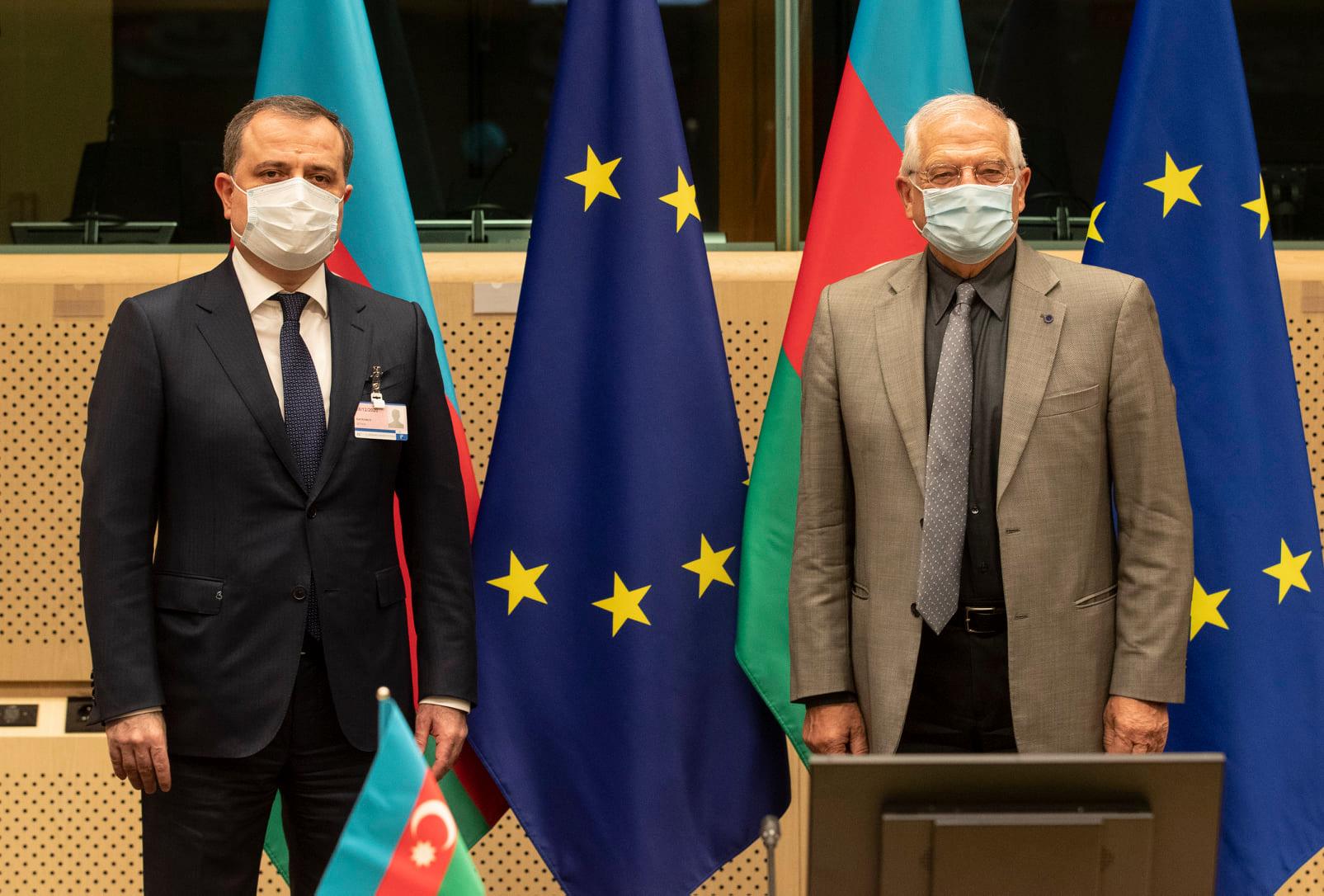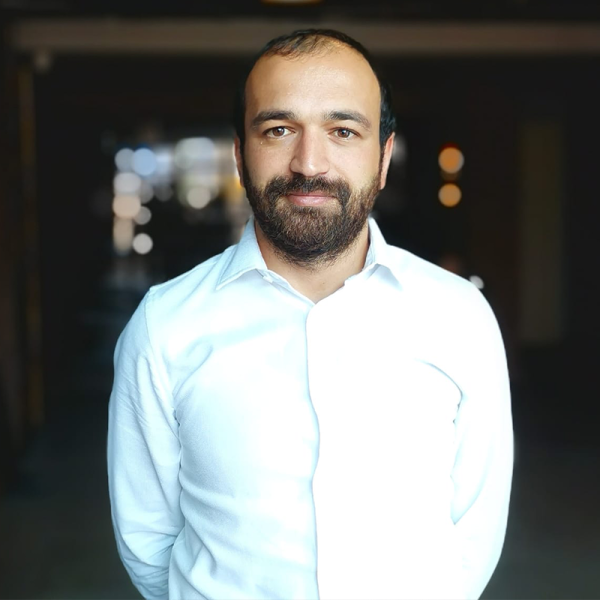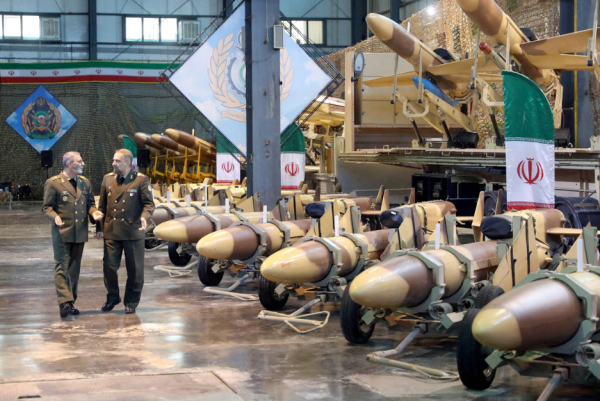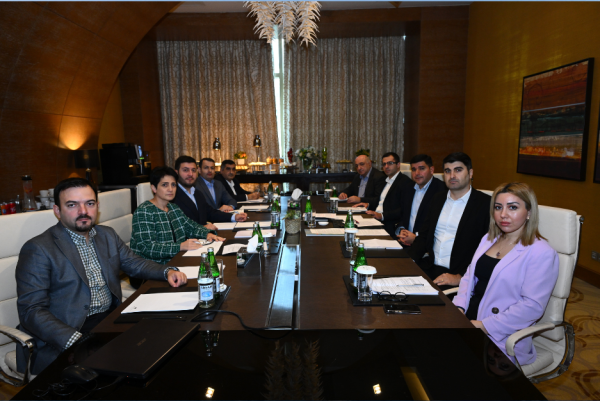The EU’s engagement with Azerbaijan: less for less or compartmentalize for more? A view from Baku

The EU’s engagements with external actors are guided by the Common Foreign and Security Policy (CFSP) and other relevant strategic documents. They establish the general patterns according to which relevant EU institutions and technocrats negotiate and conclude cooperation frameworks. In the documents, the EU uses two different languages to categorize its relations with its strategic partners and with the least developed and developing countries. With the former, the EU usually compartmentalizes its relations and with the latter, the EU tends to apply an ‘incentive-based approach’ (less for less or more for more). Azerbaijan is in the latter category, although it desires to be in the first one since it sees itself as the EU’s strategic partner and tries to behave accordingly. As the EU operates according to the conferral principle, it must stick to what has already been agreed beforehand by member states working with the third parties. Thus, although emerging structural conditions require the EU to compartmentalize its relations with Azerbaijan, regulatory and normative policy strategies say otherwise. That leads to less for less while limiting avenues for compartmentalization for more when the EU engages with Azerbaijan.
The EU uses the term “strategic partnership” to map out its collaboration with a variety of major countries. Taken, the EU ‘has not yet defined the nature of its strategic partnerships’, the term does not have well-established contours. In the official documents, those countries are usually identified as strategic partners together with whom the EU assumes to share responsibility for international security and deal with the universal challenges to be an influential global actor. As the strategic partners disperse across the different continents, developing a common agenda fitting the best interests of each partner is not an easy task. Thus, the EU prefers to shape an individual-tailor-made agenda in its cooperation with so-called strategic partners.
The EU’s first Security Strategy titled “A Secure Europe in a Better World” mentions Japan, China, Canada, and India, as well as the US and Russia as the EU’s strategic partners in 2003. In the following years Mexico, Brazil, South Africa, South Korea were included in the list. The EU usually tries to compartmentalize its relations with those countries: even a serious dispute in one area does not necessarily block dialogue and cooperation in others. In this respect, although there was a dispute between the EU and South Korea about labor rights during the negotiations of a free trade agreement, it did not prevent them from signing it in 2009 and ratify in 2015. That is one way of preventing a deadlock in bilateral relations and consequently, finding a way for mutually beneficial collaboration.
The EU-Azerbaijan partnership is not a strategic one, although in Brussels from time to time they call Azerbaijan the EU’s strategic partner. Security Strategy 2003 tasks the EU ‘to promote a ring of well-governed countries to the East of the European Union and on the borders of the Mediterranean’. It identifies geographies adjacent to the EU as troubled areas and assigns the EU to develop policies to stabilize these countries via its multidimensional neighborhood policy. Whilst Azerbaijan has neither a sea nor land border with the EU, in 2003 it was also included in the EU’s neighborhood framework together with Georgia and Armenia. According to the EU, Azerbaijan and other neighboring countries are its junior partners with whom it has responsibility and capacity to engage via the ‘carrot and stick’ policies.
Being the EU’s junior partner was not an issue for Azerbaijan until recently. On the contrary, Azerbaijan was a party to all the initiatives launched by the EU, including TRACECA (Transport Corridor Europe-Caucasus-Asia), TACIS (Technical Assistance to the Commonwealth of Independent States), TAIEX (Technical Assistance and Information Exchange Instrument of the European Commission), INOGATE (Interstate Oil and Gas Transport to Europe), ENP (European Neighbourhood Policy), and EaP (Eastern Partnership) to what the EU attached different technical means to achieve regulatory convergence. In this respect, Azerbaijan was among the signatories of the PCA (Partnership and Cooperation Agreement) with the EU in the late 1990s. Worthwhile to remember that PCA is still the legal framework regulating EU-Azerbaijan cooperation. Yet, it should be mentioned that the EU-Azerbaijan relations were not a smooth one, as Azerbaijan always cherry-picked what was offered by the EU through the programs according to its immediate needs and side-lined the normative agenda of the EU to a large extent.
From the mid-2000s Azerbaijan got access to windfall revenues from the export of hydrocarbon resources as the Baku-Tbilisi-Ceyhan pipeline became operational. BTC provided Azerbaijan with a much-needed financial lifeline to be less dependent on the EU’s financial assistance. BTC also allowed Azerbaijan to implement regional infrastructure projects such as Baku-Tbilisi-Kars that were against the EU’s regional integration endeavors at that time in the South Caucasus as the project aimed at isolating Armenia. Besides, the energy crisis that wreaked havoc on Europe’s electricity systems in 2006 and 2009 due to the Russian blockage of pipelines passing through Ukraine strengthened Azerbaijan’s hand in its collaboration with the EU as a potential alternative gas provider and transit country to energy-dependent European markets.
In the following years, Europe was hit hard by the global financial crisis and debt crisis. The crisis damaged the foundations of the neo-liberal bubble that provided a normative cover for the EU to operate. Besides, Russia’s return to realpolitik in the EU’s neighborhood, the fast rise and expansion of China, and the growing instability around Europe after the Arab Spring created extra troubles for the EU, narrowing the field of Brussel’s territorializing projects.
Considering the above-mentioned issues and structural changes in and around Europe Azerbaijan took a step back in its collaboration with regional and global powers, especially with trans-Atlantic organizations since the 2010s. While in the 2000s integrating with Euro-Atlantic structures was a foreign policy priority for Azerbaijan, in the 2010s Azerbaijan took a balanced foreign policy course: trying to distance itself from major powers and build relations with them on an equal footing. The EU’s reluctance to exhibit a clear position instead of employing twisted language to support territorial integrity of Azerbaijan when it comes to the Nagorno-Karabakh conflict were also among the issues that contributed to cooling the relations. Consequently, when in 2013 the EU offered a new cooperation framework to replace outdated PCA with AA/DCFTA (Association Agreement/Deep and Comprehensive Free Trade Agreement) in the framework of the Eastern Partnership initiative, Azerbaijan refused to sign it. In return, Azerbaijan offered ‘agreements to individual European Union states on policies such as energy cooperation and strategic partnership’ which was also rejected by the EU. Worthwhile to mention that AA/DCFTA was the deepest integration initiative proposed by the EU and it was also a reaction to the changes to endure the attractiveness of the EU for eastern neighbors.
The new developments in the so-called shared neighborhood also made the EU revise its neighborhood policy in 2015. Considering the less for less/more for more approach is not ‘sufficiently strong incentive […], where there is not the political will’, in revised ENP the EU proposes a more flexible and tailor-made approach regarding the partnership with the neighborhood countries. This allowed the EU and Azerbaijan to launch negotiations on a new agreement in 2017. In 2018, the parties announced the partnership priorities which include strengthening institutions and good governance, economic development and market opportunities, connectivity, energy efficiency, environment, and climate action, mobility, and people-to-people contacts. When it comes to the nature of the agreement, Azerbaijan emphasizes its strategic significance while in the EU website they categorize it as the modernization of PCA signed in 1999.
Although in 2019 through different channels it was signaled that the EU and Azerbaijan were on the verge of finalizing the agreement, it has not happened until today. And it is still far from certain when they finally will ink it. In December 2019 when President Aliyev gave an interview to the local TV channels he complained that Azerbaijan ‘expects equal partnership, not a unilateral instruction list from the EU’ and Azerbaijan is not in need of signing the agreement until its interests are met. It appears that the flexibility and tailor-made approach that the EU envisions in the revised ENP has its limits. The EU is flexible and ready to make a tailor-made approach within the margins that the EU has already been conferred to it. In other words, although the EU recognizes the limits of the incentive-based approach, in one way or another the EU still sticks to it this time by deciding on what an ENP country may incentivize. When the EU works with Azerbaijan, the consequences of this perspective are as same as the less for less approach as it creates deadlock too. Then the question is who should make concessions to put a step forward?
The recent resolution by the EU parliament on prisoners of war and reactions from Azerbaijan show that parties interpret the current situation differently and are determined to remain loyal to their principles and priorities. In this context, it is less likely the EU will treat Azerbaijan as an equal and strategic partner in a true sense. These consolidate the uncertainty around the EU-Azerbaijan relations and constrain the avenues for mutually beneficial cooperation. Meanwhile, the other actors, including the EU’s key rivals Russia and China, reinforce their positions in Azerbaijan, the South Caucasus, and regions in proximity. Whereas the EU only regrets that it could not ‘demonstrate leadership in bringing two of its highly valued Eastern Partners to the negotiating table’, Russia has managed to station its army in Azerbaijan after the 44-Day War and Azerbaijan’s membership in Russian led Eurasian Economic Union (EAEU) sounds more feasible nowadays. In the same regard, the EU’s ‘systemic rival’ China’s investments in different sectors in Azerbaijan and the South Caucasus are on the rise. Against these backdrops, the EU’s policy strategies toward Azerbaijan remain largely on paper as they do not fully reflect emerging structural conditions in the region. Instead, the EU chooses to stick to the territorializing attitude of discipline and punishment, relying on its soft power capabilities. That is the same attitude employed by Russia using its hard power instruments.
Nowadays Azerbaijan needs support from the EU and West more than ever. Any delay and miscalculations might break Baku’s resistance vis-à-vis Russia and push it further toward Russia’s sphere of influence as was the case in Belarus. If the EU’s regulatory and normative policy framework is more important than long term potential geopolitical and material gains, the EU should consider that things are not going to be any better under the Russian grip - neither in terms of regulatory and normative convergence nor stability and security of the entire region. Besides, it should be taken into account that to be influential in the South Caucasus region requires the EU to find a way to cooperate with Azerbaijan. Projects implemented and investments made by Azerbaijan throughout the last 30 years for the development of the east-west energy, telecommunication, transport, corridors, and logistics are fitting the vital interests of the EU both in terms of having alternative networks and creating structural conditions to decrease the Russian influence not only in the South Caucasus but also in Central Asia in the long run. And these projects are actually the next phases of the initiatives that were implemented by the EU and West in the 1990s and early 2000s that continue to generate benefits to this day. Under these circumstances, compartmentalization seems a better strategy for the EU rather than an incentive-based approach when the EU works with Azerbaijan. And in general ‘would sovereignty and equality not be a better leitmotif for EU strategy in the neighborhood?’







